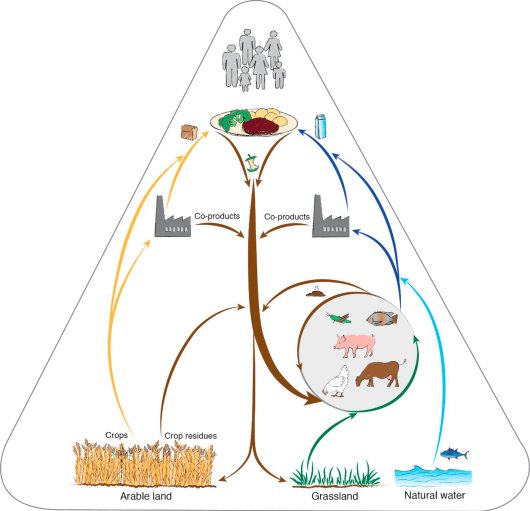About us
Exploring the potential of circular food systems to feed the world while respecting the planet
In the Circular Food Systems (CiFoS) team we investigate wheter transitioning to a circular food system can provide a solution to many of the environmental and healthy challenges of current food systems.
In a circular food system, we want to produce enough healthy food for the growing world population while taking our planet’s carrying capacity into account. This has many implications, like for instance, avoiding the conversion of more natural ecosystems into agricultural lands, due to the well known negative effects that land use expansion has for the climate and global biodiversity. To achieve this, circular food systems propose to make optimum use of all our biomass. Plant biomass forms the basis in a circular food system, and ideally it should be used primarily to produce human food. We also need to prevent losses throughout the complete chain: by-products from food production, processing and consumption should be reused or recycled into the food system. If we take bread as an example, residues from harvesting are straw and chaff, wheat bran is co-product of flour production, and general waste and human faeces are by-products of consumption. Furthermore, we should make the most efficient use of animals by using them to unlock biomass that is inedible for humans, turning it into valuable food, manure and ecosystem services.

The biophysical concept of circularity: arable land is primarily used for food production; biomass unsuited for direct human consumption is recycled as animal feed; by-products and manure are used to maintain soil fertility. In this way, nutrients are recycled and animals contribute to a circular food system, while sustainably feeding the future population. Source: Van Zanten et al., (2019), Global Food Security.
